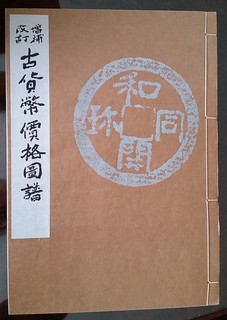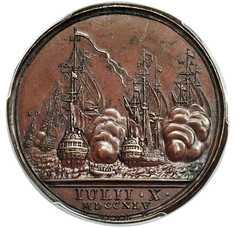
PREV ARTICLE
NEXT ARTICLE
FULL ISSUE
PREV FULL ISSUE
NOTES FROM E-SYLUM READERS: SEPTEMBER 3, 2017On Japanese Books I don't recognise this particular book but it looks like a typical Japanese binding, similar to one I picked up when I lived there in 1986-87 (photos attached). The 3rd and 4th images in the article are upside down, however - Japanese books traditionally have the spine at the right and open from what looks like the back page to us. It's less common now but older books were done that way. Mine was printed in 1974 but done the old way, for whatever reason. A couple of pictures from the one I bought are attached. The paper is the same too - each page is a double leaf, uncut. 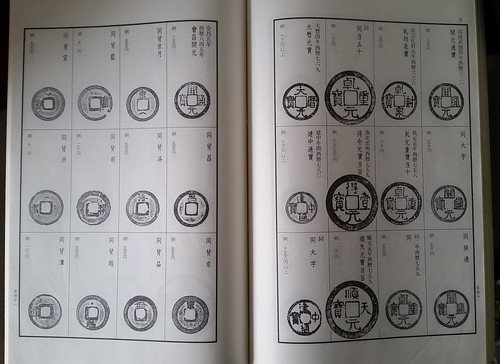 Thanks. Sorry about the image alignment last week. This is good information to be aware of. Here's the link to last week's story in case anyone can help identify Lee's
book. -Editor
To read the earlier E-Sylum article, see: More on the 1745 Lima Treasure
I believe this to be incorrect and this medal illustrates the alternative theory, which is in fact supported by original documentation. For anyone interested they cannot do better than read the excellent article by Harry Apling published in the Seaby Coin & Medal Bulletin for March 1970 pages 82-87. I enclose a copy for easy reference. Thank you, again, for all your hard work. I have particularly been interested in your recent references to Coin Digit Image databases. Thank you for the Lima references! -Editor
To read the earlier E-Sylum article, see: Ft. Knox Politics 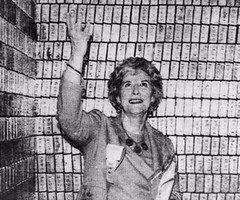 A reader inquired about the political tone of last week's Ft. Knox article. While we veer away from politics as much as possible, it's often necessary to provide context to a
numismatic issue, which in this case was the earlier Ft. Knox visit by U.S. Mint Director Mary Brooks, as recounted in the quoted Coin World article. The political push behind her 1974 visit
was the same as Mnuchin's 40 years later - worries that the nation's gold reserve had been raided by earlier administrations. This time, as before, those rumors were put to rest. A reader inquired about the political tone of last week's Ft. Knox article. While we veer away from politics as much as possible, it's often necessary to provide context to a
numismatic issue, which in this case was the earlier Ft. Knox visit by U.S. Mint Director Mary Brooks, as recounted in the quoted Coin World article. The political push behind her 1974 visit
was the same as Mnuchin's 40 years later - worries that the nation's gold reserve had been raided by earlier administrations. This time, as before, those rumors were put to rest.In today's issue we have at least three numismatic stories driven by politics - the Kennedy "In the Pope We Hope" medal, the on again/off again plan to put Harriet Tubman on a banknote, and the burning in protest of a banknote in Senegal. Numismatics doesn't exist in a vacuum, and we have to acknowledge political thought even as we steer clear of taking sides (as in the Ft. Knox piece, where concerns of both major parties were acknowledged). -Editor To read the earlier E-Sylum article, see: Kudos from a New Reader Love the emails. Educational, interesting, humor....something for everyone. Thanks! We're glad you like The E-Sylum, and glad to have you on board. It's an education every week - always something new to discover about numismatics.
-Editor
Elysium I recently discovered the word Elysium. At first glance I naturally thought it was Esylum. I was mistaken…or was I? Upon learning the definition of Elysium – “any place or state of perfect happiness” – one might consider them synonyms. Here's more from the Merriam-Webster dictionary. -Editor
Definition of Elysium 1: the abode of the blessed after death in classical mythology 2: paradise Did You Know? So I guess we're a place of numismatic heaven on earth, or at least cyberspace. If we've never been physically printed do we even exist at all? Maybe it doesn't matter.
Now my head is hurting from all this philosophy... -Editor
To read full definition, see: 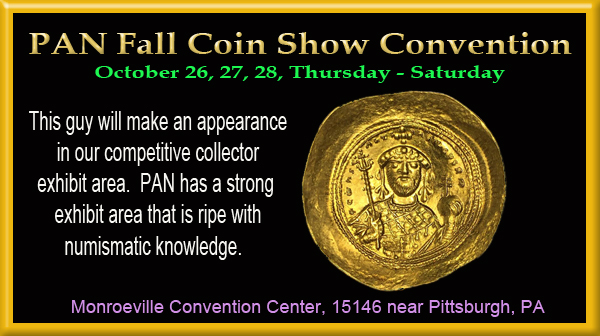 Wayne Homren, Editor The Numismatic Bibliomania Society is a non-profit organization promoting numismatic literature. See our web site at coinbooks.org. To submit items for publication in The E-Sylum, write to the Editor at this address: whomren@gmail.com To subscribe go to: https://my.binhost.com/lists/listinfo/esylum All Rights Reserved. NBS Home Page Contact the NBS webmaster 
|
